Occupational environment monitoring at the factory producing tea
99,000 ₫
Note: The above price is calculated for one sample, the price may fluctuate depending on the area of the environment to be monitored and the movement of the market. For more accurate price support, please refer to the quotation table or contact directly with our consulting staff.
Environmental monitoring of tea manufacturing factories is a session of collecting, analyzing, and evaluating factors in the workplace that may be harmful to the health of workers.
Table of Contents
Toggle1. Overview of Tea Production Factory
a. What is a Tea Production Factory?
A tea production factory is a facility that produces and processes tea from fresh young tea leaves. Tea factories typically receive leaves from tea gardens and carry out processing stages to create various types of tea with diverse quality and flavor.
The tea production process generally includes key steps such as harvesting, processing, shaping, drying, and packaging. Each stage is crucial to maintaining the quality and flavor of the tea.
Tea factories are usually equipped with specialized machinery and equipment to perform the processing stages. Common machinery includes cutting machines, rolling machines, drying machines, pressing machines, and packaging machines.
Teas produced in a factory can include green tea, black tea, oolong tea, milk tea, scented teas, and many other varieties, each with its own production and processing methods that create unique characteristics and flavors.

b. Production stages in a Tea Production Factory
The production stages in a tea factory typically include:
- Harvesting: Harvesting is the most important stage in tea production. Selecting the right time and method ensures the quality of the tea leaves.
- Oxidation (fermentation) (if applicable): This stage is primarily applied for black tea and oolong tea. Tea leaves are exposed to air to oxidize, creating characteristic color and flavor.
- Heat treatment (kill-green): Applied for green and oolong teas to stop oxidation. Tea leaves are quickly heat-treated by drying or pan-firing to halt enzymatic activity and preserve the fresh green color and flavor.
- Rolling and shaping: After previous stages, tea leaves are rolled and shaped into their final form. This can be done manually or using specialized machines.
- Drying: Once shaped, tea leaves are dried to remove moisture and preserve them. Drying can be done naturally or using drying machines.
- Sorting and grading: Tea leaves are classified according to size, shape, and quality. This ensures uniform quality and flavor.
- Packaging: Finally, tea is packaged in suitable materials to preserve quality and flavor. Packaging usually protects against light and external effects.

c. Machinery used in Tea Production Factories
Tea production factories use various specialized machines and equipment during processing. Common machines include:
- Tea harvesting machines: Used to harvest tea leaves from plants. These include branch cutters or whole plant cutters.
- Tea drying machines: Used to remove moisture from leaves after harvest or processing. Drying can involve high heat or natural methods like sunlight or smoke.
- Tea rolling machines: Used to roll and shape tea leaves, while stimulating enzymatic reactions for oxidation or preventing it.
- Tea pressing machines: Used to extract liquid from processed tea leaves, using pressure or compression.
- Tea sieving machines: Used to separate unwanted parts such as stems, dust, or seeds from tea leaves. Multiple sieves of different sizes may be used.
- Tea packaging machines: Used to package tea into final containers, either automatically or semi-automatically, such as tea bags, boxes, or pouches.

d. Occupational hazards in Tea Production Factories
In tea production factories, workers may face several occupational diseases including:
- Respiratory issues: Exposure to tea dust or vapors during processing may cause asthma, bronchitis, pneumonia, and respiratory allergies.
- Skin conditions: Contact with chemicals during processing can cause irritation, dermatitis, eczema, and other skin problems.
- Eye problems: Exposure to dust or chemicals may lead to eye irritation, inflammation, and other issues.
- Musculoskeletal disorders: Heavy manual tasks like pulling, stacking, and transporting tea can strain the spine, joints, and muscles.
- Heat-related illnesses: High temperature and humidity in the factory may cause heat shock, exhaustion, body temperature disorders, and dehydration.
- Cold and bacterial infections: Working in warm and moist environments may increase susceptibility to colds, bacterial infections, and other illnesses.
Proper occupational protection and health and safety management must be implemented to prevent these hazards.

e. Popular types of Tea on the market
There are many popular types of tea, each with unique characteristics in flavor, color, and origin. Some common types include:
- Green tea: Leaves are not fully oxidized, preserving natural green color and fresh taste. Varieties include Japanese green teas (Matcha, Sencha), Chinese green teas (Longjing, Biluochun), and Taiwanese green teas (Tung Ting).
- Black tea: Fully oxidized leaves produce dark brown color and strong flavor. Famous varieties include Assam, Darjeeling, Ceylon, and Keemun.
- Oolong tea: Partially oxidized, offering a balance between green and black teas. Varieties include Bao Zhong, Dong Ding, Tie Guan Yin, and Da Hong Pao.
- White tea: Early-harvested leaves with minimal oxidation, light green color, and delicate flavor. Examples include Silver Needle and White Peony.
- Scented tea: Blended with flowers to create aromatic teas, such as Jasmine tea.
- Blended tea: Combination of multiple teas for diverse flavor and aroma. Examples include Earl Grey and Chai tea.
2. Overview of Occupational Environment Monitoring Services
a. What is occupational environment monitoring at a Tea Production Factory?
Occupational environment monitoring at a tea production factory involves collecting, evaluating, and analyzing workplace environmental factors to implement timely measures that minimize health risks and prevent occupational diseases. This monitoring is mandatory for tea production factories.
It plays a crucial role in protecting and promoting workers’ health, as employees are the primary resource and directly generate profit for the company. Prolonged exposure to harmful factors exceeding allowed limits can negatively affect health and cause occupational diseases.
REGISTER FOR OCCUPATIONAL ENVIRONMENT MONITORING SERVICE
b. Nam Viet’s Occupational Environment Monitoring Program
Nam Viet’s program is developed by environmental monitoring engineers specializing in occupational safety and environmental protection. Using modern measurement methods, it monitors air, water, microclimate, physical factors, and dust levels in the workplace. This program ensures a safe working environment and protects workers’ health.
Additionally, Nam Viet’s program contributes to research and development of new solutions to improve workplace environment quality. With the dedication and professionalism of its experts, the proprietary program represents a breakthrough in occupational safety management and environmental protection in Vietnam.

c. Standardization in workplace environmental measurements
Standardization is crucial for accurate and reliable results. Nam Viet follows standards recognized by the Ho Chi Minh City Department of Health. This ensures collected data is dependable for evaluating and improving the workplace environment to protect employees’ health.
Standardized procedures are conducted by experienced monitoring specialists, enabling managers to trust results and make informed decisions to safeguard worker health and the environment.
Through standardized measurement processes, Nam Viet demonstrates its commitment to a safe working environment and contributes to improving occupational safety and environmental management in Vietnam.
d. Tea Factory Monitoring Reports
Monitoring results are compiled according to Form 04, Appendix III, Decree 44/2016/ND-CP in two copies: one for the workplace under contract and one retained by the monitoring organization.
Records must be stored indefinitely according to the law.

e. Frequency of occupational environment monitoring
According to Clause 2, Article 18, Labor Safety and Hygiene Law 84/2015/QH13, employers must conduct occupational environment monitoring at least once per year.
f. Deadline for submitting monitoring reports
Reports must be submitted before December 31 each year to the local Department of Health where the company operates and where employees work.
If there are changes in technology, production, or facility upgrades that may introduce new hazards, companies must update their occupational health records and carry out necessary environmental monitoring.
g. Penalties for violations in occupational environment monitoring
According to Article 27 of Decree 12/2022/ND-CP dated January 17, 2022:
- Clause 2: Fines of 2,000,000 – 5,000,000 VND for failing to publicly disclose monitoring results to employees at the monitored workplace and at the evaluation site.
- Clause 3: Fines of 20,000,000 – 40,000,000 VND for not conducting monitoring to control risks to employee health as required by law.
- Clause 4: Fines of 40,000,000 – 60,000,000 VND for colluding with monitoring organizations to falsify monitoring activities without criminal liability.
3. Harmful environmental factors for workers in tea production factories
In tea production factories, workers may be exposed to the following harmful environmental factors:
- Chemical dust: During tea processing (cutting, drying, rolling), chemicals such as pesticides, fertilizers, detergents, and preservatives may produce chemical dust. Long-term exposure to this dust can cause irritation to the eyes, respiratory system, and skin.
- Temperature and humidity: Tea processing often requires high temperature and humidity. Working in such an environment can cause heat stress, fatigue, exhaustion, and water-electrolyte imbalance.
- Noise: Machinery and equipment in tea factories generate continuous noise. High noise levels can cause stress, sleep disturbance, and affect auditory health.
- Chemicals: Some chemicals used in tea treatment and preservation may cause skin irritation, inflammation, and other health issues.
- Biological agents: Tea factories may provide an environment conducive to the growth of bacteria, fungi, and other biological agents. Exposure to these agents can lead to infections, allergies, and gastrointestinal diseases.
- Sunlight exposure: Working outdoors or near windows can expose workers to strong sunlight, causing heat stress, glare, and negative effects on eyes and skin.
- Toxins from tea components: Some natural tea components (such as polyphenols) can cause liver and kidney damage if workers are exposed excessively.
REGISTER FOR OCCUPATIONAL ENVIRONMENT MONITORING SERVICE
4. Measures to improve working conditions in tea production factories
To improve working conditions in tea production factories and protect workers’ health, the following measures can be applied:
- Safety and hygiene management: Implement labor safety regulations and procedures, ensuring the use of personal protective equipment such as helmets, masks, goggles, and gloves to protect workers from harmful factors.
- Ensure ventilation and exhaust systems: Install ventilation systems and exhaust fans to remove dust, toxic fumes, chemical odors, and maintain a clean working environment.
- Temperature and humidity control: Adjust temperature and humidity in the factory to avoid excessive heat, moisture, or dryness, providing comfortable working conditions.
- Waste management: Implement waste management policies and procedures to safely handle waste and protect the surrounding environment.
- Training and education: Provide training on labor safety, hygiene, and environmental management to raise awareness of harmful factors and preventive measures.
- Equipment inspection and maintenance: Regularly inspect, maintain, and clean equipment used in tea production, such as machinery, ventilation systems, and waste treatment systems, to ensure effective and safe operation.
- Worker health monitoring: Conduct periodic health monitoring, including medical check-ups, tests, and assessment of workplace environmental impact on employees.
- Encourage physical activities: Promote and facilitate employees’ participation in physical activities to improve health and reduce work-related stress.
- Periodically conduct occupational environment monitoring in factories to collect and analyze harmful factors affecting workers, then adjust measures to reduce risks and prevent occupational diseases.
5. Benefits of periodic monitoring in tea production factories
An Toan Nam Viet provides businesses with outstanding advantages when using occupational environment monitoring services according to Decree 44/2016/ND-CP on managing and controlling harmful workplace factors affecting employees.
- Businesses can proactively control harmful factors in workshops or factories.
- Receive recommendations on measures to reduce harmful factors and improve workplace quality.
- Indirectly protect human resources, a key factor in business development.
- Reduce the harmful impact of occupational diseases on health, minimizing future treatment costs.
- Improve worker health, ensuring product quality and maintaining production output.
- Ensure compliance with labor safety laws and avoid legal risks.
- Enhance credibility and professionalism in all aspects, elevating the company brand.
Nam Viet’s environmental monitoring service is a solution to reduce occupational disease risks, contributing to a clean and high-quality working environment.

6. National occupational environment monitoring center
Occupational environment monitoring center of Nam Viet is a professional unit for supervising and measuring workplace environmental quality across all provinces in Vietnam. With a team of experienced monitoring specialists, the center uses modern measurement equipment to ensure accuracy and reliability.
In addition to monitoring services, the center assists clients in planning, managing, and tracking workplace environmental issues. With the motto “customer-centered,” the center prioritizes customer satisfaction, meets all client needs, and is committed to providing the best solutions for businesses.
REGISTER FOR OCCUPATIONAL ENVIRONMENT MONITORING SERVICE
With investments in technology, equipment, and human resources, Nam Viet’s monitoring center has become one of the most reputable units in occupational environment monitoring in Ho Chi Minh City, with the following objectives:
- We always value our brand reputation and service quality.
- We provide clients with the best and most suitable solutions possible.
- Alongside a team of experienced Masters and Engineers, committed to environmental protection and business benefit.
- At Nam Viet Environmental Monitoring, companies receive professional service from field experts and the best cost advantages.
The occupational environment monitoring process at Nam Viet includes the following basic steps:
- Before conducting monitoring, our company ensures all equipment is calibrated according to legal regulations.
- Follow the occupational environment monitoring procedures committed to the Department of Health accurately and fully.
- Report monitoring results honestly to employers.
- If monitoring results indicate unsafe conditions, Nam Viet provides corrective solutions, and the workplace implements the following:
- Implement measures to improve working conditions, minimize harmful factor impacts, and prevent occupational diseases.
- Conduct health examinations to detect occupational and related diseases early for workers in unsafe environments.
- Provide in-kind compensation to workers according to labor law.

7. Occupational environment monitoring quotation
To help businesses conduct professional and effective occupational environment monitoring, Nam Viet provides clients with a quotation for occupational environment monitoring services with quality and reasonable costs.
- Our quotation provides detailed pricing information for the monitoring services we offer, including costs related to travel, measurement, analysis, and reporting. Clients can trust the accuracy and reliability of the monitoring reports we provide.
- We commit to offering competitive and reasonable prices in the market and are always ready to provide quick and professional advice for any inquiries regarding monitoring services.
- With Nam Viet’s monitoring quotation, clients can easily select service packages suitable to their needs. We are committed to delivering the highest satisfaction with professional service quality.
No comments yet

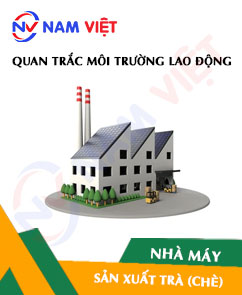
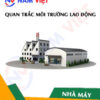
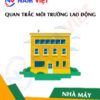
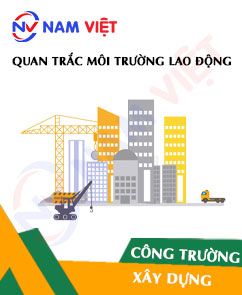


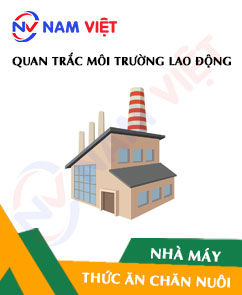




Review Occupational environment monitoring at the factory producing tea
There are no reviews yet.